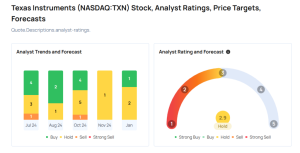
A minimum balance is the amount of money a bank requires you to keep in your account to avoid penalties. If you dip below the required amount, you could be charged a monthly maintenance fee, earn a lower interest rate, or even have your account closed. And minimum balance requirements can vary from as little as $100 to $1,000 and up.
One way to avoid this frustrating situation is to move your money to an online savings account. Unlike traditional banks, it’s uncommon for online banks to have high minimum balance requirements, if any.
Fortunately, most online banks don’t have minimum balance requirements for their savings accounts. That’s because they have lower overhead costs than banks with physical branches. As a result, they can pass on a variety of benefits to customers, including higher interest rates, fewer fees, and waived balance requirements.
Still, you don’t want to make any assumptions. Before opening an online savings account or any other type of bank account, check to see if there’s a minimum balance required in order to avoid penalties or earn the best available interest rate.
Read more: The 10 best online banks today
You’re more likely to have a minimum balance requirement with a traditional savings account than with an online account. However, it’s hard to say what the minimum will be since each account is different.
For example, the Bank of America Advantage Savings account requires a minimum daily balance of $500 to waive the $8 monthly maintenance fee. However, there are several other ways to get the fee waived, such as linking your savings account to a qualifying BofA checking account.
By comparison, U.S. Bank’s Bank Smartly Savings account has a $5 monthly maintenance fee that’s waived if you have another qualifying U.S. Bank account. But if you want to earn more than 0.05% interest, you’ll need to maintain at least $5,000 in combined deposits in the accounts.
Here’s a look at some of the top online savings accounts and their minimum balance requirements:
If your savings account balance dips below the minimum, you could face a wide variety of penalties, including:
-
Account closure
-
Minimum balance fee or monthly maintenance fee
-
No interest earnings for the month
-
Moving to a lower rate tier
If your account balance goes into the negative, you’ll experience an additional set of penalties. For example, the bank might charge an overdraft fee or non-sufficient funds fee. If this becomes a habit, the bank may even report the negative balance to ChexSystems. As a result, you may find it difficult to open a new savings account in the next few years.
Additionally, if you don’t pay back the negative balance or the bank fee, the bank can charge off the bill to collections, which will cause a drop in your credit scores.
With online banks, you can’t simply visit a branch to make a deposit. Instead, you’ll have to fund and manage your account online or through an app, which means you’ll likely want to set up automatic deposits and monitor your transactions more regularly.
Here’s what you can do to make sure your online account doesn’t drop below the minimum balance requirement (if there is one):
-
Ensure that a portion of your paycheck always goes into savings by setting up a recurring direct deposit.
-
Don’t use your savings account for day-to-day spending. Instead, use your checking account for that purpose.
-
Keep a “cushion” in your savings, or a small amount of money you never plan to use.
-
Review your account balance regularly to make sure there are no unexpected transactions.
-
Set up low-balance alerts on the account.
What’s the difference between minimum balance and minimum deposit?
The minimum balance on a bank account refers to the balance you need to maintain in order to avoid penalties. The minimum deposit is the amount you need to deposit in order to open the account. In some cases, a savings account may have a minimum opening deposit requirement but no minimum balance.
Like online bank accounts, most digital savings accounts have no minimum balance requirement.
A minimum balance fee is a fee you’re charged when your bank account balance drops below a set dollar amount. These fees can vary across different financial institutions.
Related:


